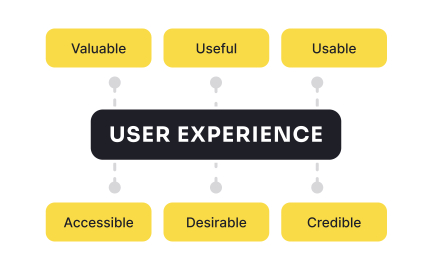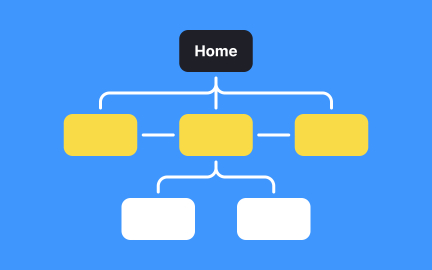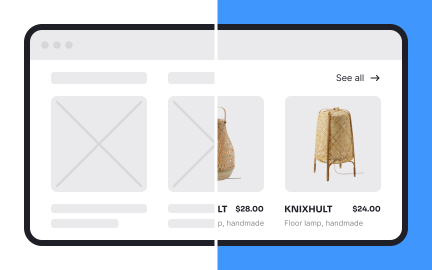User Experience (UX) Design
UX design is the practice of creating digital products that are easy to use and satisfying by focusing on usability and user-centered problem solving.

TL;DR
- Designs products around user needs and goals.
- Balances usability, accessibility, and satisfaction.
- Involves research, prototyping, and testing.
- Shapes overall product success and adoption.
Definition
UX design is the process of planning, designing, and testing digital products to ensure they are functional, accessible, and enjoyable, aligning with both user needs and business goals.
Detailed Overview
UX design is at the heart of building successful digital products. It focuses on making products intuitive, efficient, and satisfying by understanding how people interact with technology. Rather than just making interfaces visually appealing, UX design ensures every feature and flow supports the user’s goals.
A frequent question is how UX design differs from UI design. While UI design deals with the look and feel of individual interface elements, UX design covers the entire experience, from the first impression to long-term use. For example, a button’s color belongs to UI design, but whether users understand what happens when they click it belongs to UX design.
Another common query is what the UX design process looks like. It typically includes research, ideation, prototyping, testing, and iteration. Research identifies user needs, ideation generates solutions, prototypes turn ideas into tangible artifacts, testing evaluates usability, and iteration ensures continuous improvement. This process helps teams avoid building features based on assumptions.
Teams often ask how UX design incorporates accessibility. A strong UX design ensures that all users, including those with disabilities, can interact with the product. This may involve designing for screen readers, ensuring color contrast, or enabling keyboard navigation. Building inclusivity from the start prevents costly redesigns and broadens reach.
Collaboration is another frequent topic. UX designers work closely with product managers, developers, and researchers. They translate user insights into design solutions, then collaborate with engineers to ensure those solutions are implemented effectively. By bridging disciplines, UX designers keep user needs at the center of product development.
Finally, UX design has a direct business impact. Products with strong UX see higher adoption rates, reduced churn, and improved customer satisfaction. Poor UX, by contrast, leads to frustration, higher support costs, and negative brand perception. This makes UX design both a design discipline and a strategic driver of product success.
Learn more about this in the What is UX Design Lesson, a part of the UX Design Foundations Course.
UI design focuses on the look and feel of interfaces, while UX covers the entire experience, including usability, accessibility, and satisfaction.
UI is one component of UX but not the whole picture.
Usability, accessibility, desirability, credibility, and value are core components. Together, they ensure products are efficient, inclusive, trustworthy, and rewarding.
A weak link in any one area reduces the overall experience.
Through usability tests, analytics, surveys, and observational studies. Metrics like task success rate, time on task, and satisfaction scores provide insight.
Combining methods ensures reliable evaluation and actionable insights.
Strong UX improves adoption, retention, and loyalty while reducing support costs. Poor UX frustrates users, leading to churn and reputational harm.
This makes UX as much a business priority as a design one.
UX is a shared responsibility across designers, researchers, engineers, product managers, and support staff. Collaboration ensures user needs remain central.
Treating UX as a team-wide effort improves consistency and outcomes.
Recommended resources
Courses

UX Design Foundations

Design Terminology

User Psychology
Lessons

UX Design Principles

What is UX Design?

10 Usability Heuristics by Jakob Nielsen
Exercises
Assessments

Principles of Design

Design Patterns

Sketch
Tutorials

16 Best Practices for Posting Your First Project

8 Design Tips to Reduce Cognitive Load

Framing in UX Design: A Big Guide to Shaping What Users Think and Do
Projects

iOS A11Y Signup Form for SaaS

Uxcel Pride Month Scholarship Program












